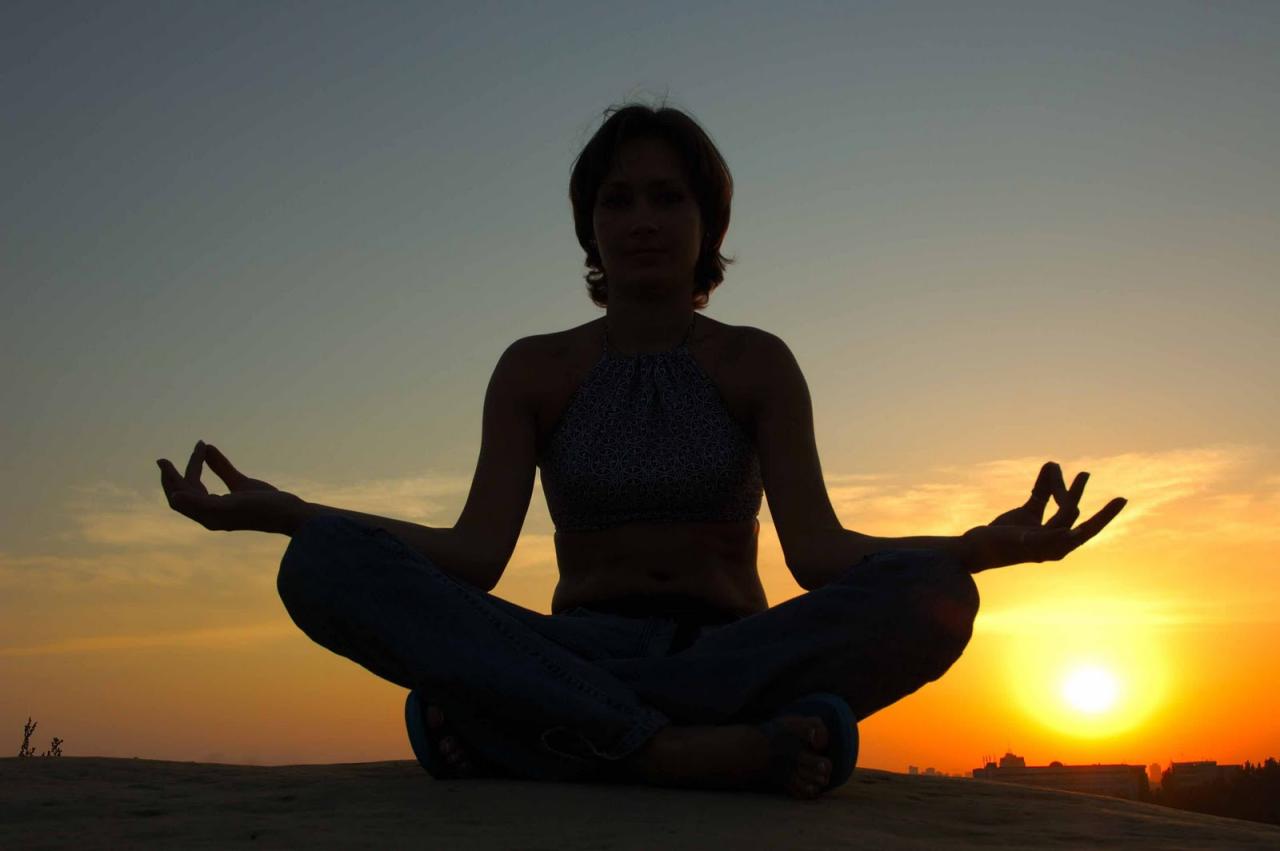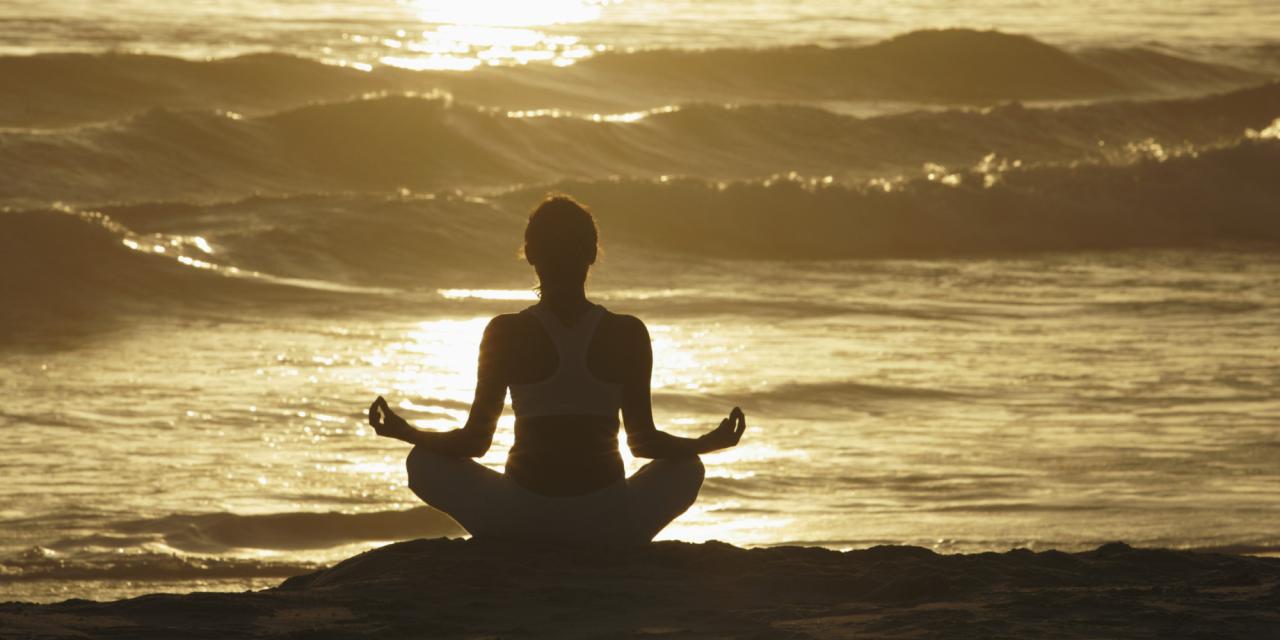Mastering the art of meditation for concentration offers a transformative path toward enhanced mental clarity and focus. This practice enables individuals to cultivate a calm and attentive mind, which is essential in today’s fast-paced world. Whether you are seeking to improve productivity, reduce stress, or deepen your self-awareness, understanding how to meditate effectively can lead to significant benefits.
In this guide, we explore practical techniques and routines designed to sharpen concentration through meditation. From preparing a suitable environment to advanced focus-enhancing exercises, you’ll discover how consistent practice can elevate your mental acuity and foster a more centered, focused state of mind.
Introduction to Meditation for Concentration

Meditation has long been recognized as a powerful tool for enhancing mental clarity, focus, and overall cognitive function. By dedicating time to mindful practice, individuals can train their minds to maintain sustained attention amidst distractions, thereby improving daily productivity and mental resilience.
Engaging in meditation influences concentration levels through several physiological and psychological mechanisms. Regular practice helps regulate stress hormones, increase blood flow to the brain, and foster a state of calmness that supports focused thinking. Over time, this results in a sharper ability to concentrate on tasks, reduce mental fatigue, and improve decision-making skills.
The Impact of Meditation on Mental Focus
Consistent meditation practice strengthens neural pathways associated with attention control and executive functioning. Scientific studies have demonstrated that individuals who meditate regularly exhibit increased activity in the prefrontal cortex—responsible for higher-order cognitive processes—leading to enhanced focus and mental agility.
Furthermore, meditation encourages mindfulness, which involves maintaining present-moment awareness. This heightened state of consciousness helps individuals notice distractions early and gently bring their attention back to the task at hand without frustration. As a result, the ability to sustain concentration over longer periods improves significantly.
Preparing for Meditation
Establishing the right environment and mental state is essential for effective meditation, especially when the goal is to enhance concentration. Proper preparation ensures that the mind remains focused and free from unnecessary distractions, allowing for a more profound meditative experience. Creating a conducive space and mentally aligning oneself prior to beginning can significantly improve the quality of your practice.
Preparation involves both physical arrangement and mental readiness. It helps in cultivating a tranquil atmosphere and fostering a mindset open to concentration. By paying attention to these aspects, practitioners lay a solid foundation that supports deeper meditation and better results over time.
Creating a Suitable Environment for Meditation
Designing an environment that encourages focus and relaxation is fundamental for successful meditation. The space should embody calmness and be free from interruptions, facilitating a seamless transition into a meditative state. The environment acts as a cue for the mind to shift into a state of mindfulness and concentration.
- Declutter the Space: Remove unnecessary objects that may divert attention. A tidy environment helps in reducing visual distractions and creates a sense of order and serenity.
- Control Lighting and Noise: Use soft, natural lighting when possible, and minimize external noise by closing windows or using background sounds like gentle music or nature sounds. These adjustments help in cultivating a peaceful ambiance.
- Maintain Comfortable Temperature: Ensure the room is neither too hot nor too cold, as discomfort can hinder concentration. Proper temperature regulation enhances physical comfort and mental focus.
- Use Soothing Scents or Incense: Aromatherapy can enhance relaxation. Subtle scents like lavender or sandalwood promote calmness and help in establishing a focused atmosphere.
Selecting Comfortable and Distraction-Free Spaces
Choosing the right location is crucial for sustaining concentration during meditation sessions. A space that is familiar and free of interruptions encourages consistency and depth in practice.
- Opt for a Quiet Environment: Select a place where external noises are minimal or manageable. Residential corners, dedicated meditation rooms, or quiet outdoor areas are ideal choices.
- Prioritize Comfort: Use a supportive cushion or chair that allows the spine to stay upright without strain. Comfortable seating maintains alertness and prevents physical discomfort from disrupting focus.
- Establish a Routine Spot: Consistently meditating in the same location helps your mind associate that space with focus and relaxation, reinforcing your practice over time.
- Avoid High-Traffic Areas: Spaces near entrances, kitchens, or noisy household areas can introduce frequent distractions. Isolating oneself in a dedicated corner nurtures concentration.
Mentally Preparing for Meditation
Before beginning meditation, it is important to engage in mental activities that foster readiness and clarity. These steps help in transitioning from everyday thoughts to a focused meditative state.
- Set a Clear Intention: Clarify the purpose of your meditation session, such as improving concentration or cultivating mindfulness. An intention provides direction and motivation.
- Practice Deep Breathing: Engage in a few minutes of slow, diaphragmatic breathing to relax the nervous system and anchor your focus on your breath, easing mental agitation.
- Release Mental Clutter: Gently acknowledge and let go of lingering thoughts or worries. Visualize them drifting away, making space for calmness and concentration.
- Adopt a Positive Mindset: Approach your session with patience and openness, recognizing that concentration is a skill developed over time. Cultivating patience promotes persistence and reduces frustration.
Remember: A well-prepared environment and a calm, focused mind are vital for achieving deeper levels of concentration during meditation. Consistent preparation nurtures discipline and enhances the overall effectiveness of your practice.
Basic Meditation Techniques for Concentration
Developing concentration through meditation involves engaging in specific practices that train the mind to stay focused and present. These foundational techniques are accessible, easy to learn, and highly effective for both beginners and experienced practitioners seeking to enhance their mental clarity and attention span. Incorporating these practices into daily routines can lead to improved productivity, reduced stress, and a stronger ability to maintain focus across various tasks.
Below are some of the most straightforward yet powerful meditation techniques that cultivate concentration. Each method emphasizes different aspects of mindfulness, breath awareness, and visualization, offering a versatile toolkit suited to diverse preferences and needs.
Simple Breathing Meditation Practices to Improve Focus
Breathing meditation is one of the most fundamental and accessible techniques to develop concentration. It centers on observing the breath as it naturally occurs, anchoring the mind to the present moment. Regular practice enhances attention span, calms mental chatter, and fosters a sense of inner stability.
- Find a comfortable seated position with your back straight but relaxed. Close your eyes if you feel comfortable doing so, or softly gaze downward.
- Begin by taking a few deep breaths, inhaling slowly through the nose, and exhaling gently through the mouth or nose.
- Allow your breathing to settle into a natural rhythm, focusing your attention on the sensation of the air entering and leaving your nostrils or the rise and fall of your chest or abdomen.
- If your mind wanders, gently acknowledge the distraction and redirect your focus back to your breath without judgment.
- Practice this for 5-10 minutes daily, gradually increasing the duration as comfort and concentration improve.
“Focus on your breath as an anchor, and your mind will become steadier and clearer in its attention.”
Guided Visualization Exercises for Concentration
Guided visualization involves mentally imagining a peaceful scene or a specific goal, fostering a deep state of focus through vivid imagery. This technique enhances concentration by engaging the imagination and directing mental energy toward a chosen visualization, which can be tailored to personal interests or objectives.
Follow this step-by-step guide to practice guided visualization effectively:
- Choose a quiet, comfortable environment free from distractions. Sit or lie down in a relaxed posture.
- Close your eyes and take a few deep, calming breaths to settle your mind.
- Begin by imagining a serene place, such as a tranquil beach, lush forest, or peaceful garden. Visualize details: the colors, textures, sounds, and sensations associated with this scene.
- Focus on engaging all your senses—feel the warmth of the sun, hear the gentle rustle of leaves, see the vibrant colors, and smell the fresh air.
- Maintain this vivid imagery for 10-15 minutes, allowing your mind to become immersed in the scene without distraction.
- When finished, gradually bring your awareness back to your physical environment and open your eyes slowly.
Visualization nurtures concentration by anchoring mental focus to detailed sensory experiences, fostering mindfulness and mental clarity.
Body Scan Meditation for Enhancing Concentration
The body scan meditation systematically brings attention to different parts of the body, promoting heightened awareness and reducing mental fragmentation. This technique strengthens the mind’s capacity to sustain focus by cultivating a present-moment awareness that extends throughout the body.
Implementation involves the following procedure:
- Lie down comfortably on a flat surface or sit in a supportive chair, keeping your spine aligned.
- Close your eyes and take several deep breaths to relax your body and mind.
- Begin by directing your attention to the toes of your feet. Observe any sensations, warmth, coolness, or tension without trying to change them.
- Gradually move your focus upward through your body—feet, ankles, calves, knees, thighs, hips, abdomen, chest, back, shoulders, arms, hands, neck, and finally, your head.
- At each stage, spend a few moments noticing any physical sensations or areas of tension, releasing them as you exhale.
- If your mind drifts away, gently redirect your focus back to the part of the body you were attending to.
- Complete the scan by taking a few deep breaths and becoming aware of your entire body as a unified whole.
| Meditation Technique | Primary Benefits |
|---|---|
| Breathing Meditation | Enhances focus, reduces stress, grounds attention to the present moment |
| Guided Visualization | Improves mental imagery skills, fosters relaxation, increases attention span |
| Body Scan | Increases bodily awareness, reduces mental distraction, cultivates calmness |
Developing a Meditation Routine
Establishing a consistent meditation routine is fundamental to enhancing concentration over time. A well-structured schedule helps embed meditation as a daily habit, making it easier to sustain progress and experience lasting benefits. Designing a routine tailored to individual needs and lifestyles encourages commitment and fosters a deeper focus during practice sessions.Creating an effective meditation routine involves selecting specific times and durations that fit seamlessly into your daily schedule.
Regularity is key; practicing at the same time each day helps condition the mind and body to enter a focused state more readily. It is equally important to adapt your routine as you progress, gradually increasing durations or modifying techniques to deepen your concentration capabilities.
Designing a Daily Meditation Schedule
Developing a tailored schedule requires assessing personal routines and identifying optimal times when the mind is most receptive. Many practitioners find early mornings ideal, as the mind tends to be calmer and less cluttered. Alternatively, some prefer evening sessions to unwind and detach from daily stressors. Selecting a consistent time enhances adherence and creates a habit.For beginners, starting with shorter sessions, such as 5 to 10 minutes daily, sets a manageable foundation.
As concentration improves, durations can be gradually extended to 15, 20, or even 30 minutes. Advanced practitioners might incorporate multiple sessions throughout the day or dedicate longer periods, like 45 minutes to an hour, to deepen their focus and resilience.
Tips for Maintaining Consistency and Overcoming Obstacles
Consistency can be challenged by fluctuating daily schedules, distractions, or waning motivation. To counteract these obstacles:
- Set specific, achievable goals for each session to maintain motivation.
- Designate a quiet, comfortable space dedicated solely to meditation, minimizing external disruptions.
- Use reminders or alarms to establish a fixed time for daily practice.
- Maintain a meditation journal to record progress, challenges, and insights, fostering accountability.
- Be flexible and forgiving; if a session is missed, resume the routine without self-criticism to preserve long-term consistency.
Examples of Meditation Durations for Different Practitioners
Different levels of experience warrant varying session lengths to optimize practice and prevent burnout:
| Experience Level | Typical Duration | Remarks |
|---|---|---|
| Beginner | 5-10 minutes | Focus on establishing consistency and overcoming initial distractions. |
| Intermediate | 15-20 minutes | Allows for deeper concentration and exploration of techniques. |
| Advanced | 30-45 minutes or more | Facilitates profound states of focus and mindfulness, often integrated into daily routines or retreats. |
Practicing regularly with suitable durations enhances focus, reduces mental clutter, and leads to a more profound meditative experience.
Tracking Progress and Adjusting Routines
Monitoring your meditation journey helps identify what techniques and durations yield the best concentration improvements. Using a journal or digital app to log daily sessions provides insights into patterns and progress over time. Note factors such as mood, energy levels, distractions, and overall focus during each session.Periodic review of your logs allows for informed adjustments to your routine. For instance, if concentration wanes after 10 minutes, consider extending to 15 minutes gradually.
Conversely, if difficulty maintaining focus persists, reducing session length temporarily can help rebuild confidence. Incorporating feedback from your experience ensures a routine that evolves with your growing skills and changing circumstances.
Advanced Practices to Boost Concentration

Building upon foundational meditation techniques, advanced practices aim to deepen mental focus, enhance clarity, and develop sustained concentration. These methods are particularly beneficial for individuals seeking to improve their mental resilience and achieve higher levels of mindfulness. Integrating these practices into your routine can significantly elevate your meditative experience and mental acuity.
Engaging in advanced concentration techniques requires dedication and patience. They involve more refined focus strategies, including heightened mindfulness meditation, specialized concentration exercises, and the integration of broader mental training disciplines. These approaches foster not only stronger focus but also a greater sense of mental stability and emotional balance.
Mindfulness Meditation Techniques to Deepen Focus
Mindfulness meditation at advanced levels emphasizes cultivating a non-judgmental awareness of present-moment experiences, allowing practitioners to observe their thoughts, sensations, and emotions with clarity and equanimity. Deepening focus through mindfulness involves progressively reducing external distractions and cultivating a sustained, attentive presence.
- Body Scan with Focused Attention: Practitioners systematically scan their body, paying close attention to sensations without judgment. This enhances body awareness and anchors the mind more firmly in the present moment.
- Open Awareness Meditation: Instead of focusing on a single object, practitioners maintain an open, expansive awareness of all stimuli—sensations, sounds, thoughts—allowing them to observe without attachment, which cultivates a heightened state of mindfulness.
- Breath Awareness with Depth: Advanced breath-focused practices involve slow, deliberate breathing, with attention on subtle respiratory sensations, fostering a tranquil yet alert state conducive to deeper concentration.
These mindfulness techniques, practiced regularly, deepen focus by training the mind to remain attentive amidst distractions, thereby strengthening mental discipline and clarity essential for advanced concentration.
Concentration-Enhancing Exercises on a Single Object
Focusing intensely on a single object is a core practice for developing unwavering concentration. These exercises involve narrowing attention and resisting external distractions, which gradually trains the mind to sustain focus over extended periods.
- Trataka (Candle Gazing): This involves fixing the gaze steadily on the flame of a candle without blinking, observing the flame’s details, and maintaining focus until the mind becomes calm and centered.
- Object Fixation: Concentrate on a physical object such as a flower, coin, or geometric shape, noting all its attributes—color, texture, shape—while resisting all other thoughts.
- Visual Imagery Meditation: Create a vivid mental image of an object or scene, maintaining this image with clarity and detail, which enhances visualization skills and focus stamina.
Consistent practice of these exercises enhances the ability to maintain attention on a single point, which translates into improved focus during complex tasks or prolonged meditation sessions.
Integration of Meditation with Other Mental Training Practices
Combining meditation with other mental training disciplines amplifies concentration capabilities by leveraging different approaches to mental conditioning. These integrative practices include cognitive training, visualization techniques, and mental resilience exercises.
- Cognitive Focus Training: Engaging in activities such as memory tasks, puzzles, or attentional control exercises complements meditation by strengthening neural pathways involved in sustained attention.
- Visualization Techniques: Mentally rehearsing successful focus scenarios, such as performing well in a test or sporting event, primes the mind for heightened concentration during actual performance.
- Breathwork and Autogenic Training: Combining breath regulation with self-suggestion techniques fosters a relaxed yet alert mental state, conducive to deepening concentration and reducing mental fatigue.
This integrated approach fosters a holistic development of mental focus, enhancing resilience against distractions and supporting sustained attention in various contexts, from academic pursuits to high-pressure professional environments.
Comparison of Practice Levels in Concentration Meditation
| Practice Level | Techniques | Focus Duration | Difficulty | Goals |
|---|---|---|---|---|
| Beginner | Basic breath awareness, simple object fixation | 5-10 minutes | Low to moderate | Establish foundational attention, reduce external distractions |
| Intermediate | Body scan, open awareness, focused attention on complex objects | 15-30 minutes | Moderate | Deepen mindfulness, enhance sustained focus, develop mental clarity |
| Advanced | Trataka, visualization, combined mental training disciplines | 30+ minutes | High | Achieve stable, unwavering concentration, cultivate high-level mental resilience and emotional balance |
Progressing through these levels requires consistent practice, patience, and mindful reflection on one’s development, ultimately leading to profound improvements in focus and mental stability.
Common Challenges and Solutions

Meditation for concentration can be a highly rewarding practice, but it often brings with it certain challenges that practitioners need to recognize and address. Understanding these common difficulties and implementing effective strategies can significantly enhance the quality and consistency of your meditation sessions. By proactively managing obstacles, you can foster a more focused and peaceful mind, making your meditation practice more fruitful and sustainable over time.During meditation, it is natural to encounter distractions, wandering thoughts, and interruptions.
These challenges are part of the learning process and can be turned into opportunities for growth. Developing practical solutions to common problems helps maintain momentum and deepens your concentration, ultimately leading to a more profound meditative experience.
Wandering Thoughts and Distractions
One of the most prevalent issues faced during meditation is the tendency of the mind to drift away from the focal point, such as the breath, a mantra, or a visual point. This wandering is a normal mental activity, but if left unchecked, it can diminish the effectiveness of the practice. Distractions from external stimuli like noise, interruptions, or internal factors such as fatigue and boredom can also interfere with maintaining focus.To overcome wandering thoughts, it is helpful to gently acknowledge the distraction without judgment and then redirect attention back to the chosen point of focus.
Practicing mindfulness of thoughts allows you to observe them without attachment, reducing their power over your concentration. Creating a quiet, comfortable environment minimizes external disturbances, while setting clear intentions before each session can anchor your attention.
Strategies for Resetting Focus After Interruptions
Interruptions are inevitable—be it a noise, a sudden thought, or an internal discomfort. The key is learning how to reset focus swiftly and compassionately when disruptions occur. First, acknowledge the interruption with a gentle awareness rather than frustration or self-criticism. Recognize that interruptions are part of the meditation journey and that each moment provides an opportunity to practice patience and resilience.Next, gently bring your attention back to your object of focus, whether it’s your breath, a mantra, or a visualization.
If your mind continues to wander, use a simple, calming phrase or breath counting to re-anchor yourself. Establishing a consistent routine for returning to focus can help develop this skill, making it easier to regain concentration after each disturbance.
Quick Tips for Maintaining Focus During Meditation
Maintaining concentration throughout a meditation session can be challenging, but these quick tips can serve as effective reminders and aids:
- Start with short sessions: Gradually increase meditation duration to build stamina without feeling overwhelmed.
- Use a gentle, stable posture: Sit comfortably with the back straight to promote alertness without tension.
- Focus on your breath: Utilize the natural rhythm of breathing as a reliable anchor for attention.
- Count breaths: Counting each inhale and exhale can help maintain focus and prevent wandering thoughts.
- Set an intention: Clear intentions before starting can guide your attention and deepen your commitment.
- Avoid multitasking: Dedicate your full attention to the meditation, minimizing external distractions.
- Practice patience: Accept wandering thoughts as part of the process, gently returning focus without self-criticism.
- Use gentle reminders: Periodically remind yourself of your purpose and the importance of staying present.
By integrating these strategies and tips into your meditation routine, you can effectively address common challenges and cultivate a more focused, peaceful mind, enhancing your overall concentration and meditation experience.
Additional Resources and Tips

Achieving improved concentration through meditation often benefits from supplementary tools, guidance, and mindful adjustments to practice. Integrating these resources into your routine can deepen your understanding, enhance focus, and sustain your meditation habits over the long term. This section provides practical suggestions, highlights the importance of posture and mental attitude, and offers strategies for consistent practice.A well-rounded approach to meditation involves leveraging various tools and adopting supportive habits.
These resources can serve as valuable aids, whether you are a beginner or seeking to refine your concentration techniques. Considering factors such as posture, breath control, and maintaining a positive mental attitude can significantly influence the effectiveness of your meditation sessions, fostering a more focused and peaceful mind. Incorporating meditation into daily life ensures steady progress and lasting benefits, making it an integral part of a healthy lifestyle.
Suggested Meditation Apps and Guided Sessions
The proliferation of digital resources has made meditation more accessible and customizable. Many apps and online platforms offer guided sessions, tracking progress, and tailored programs designed specifically to enhance concentration.
- Headspace: Offers a variety of guided meditations focused on concentration and mental clarity, with progress tracking features.
- Calm: Provides meditation sessions, breathing exercises, and sleep stories that support focus and stress reduction.
- Insight Timer: Features thousands of free guided meditations from diverse teachers, suitable for different levels and preferences.
- 10% Happier: Combines practical meditation techniques with expert guidance, ideal for beginners and seasoned practitioners.
Supporting materials such as audiobooks, podcasts, and printable guides can supplement your practice, offering insights into meditation philosophy and practical tips for enhancing concentration.
Role of Posture, Breathing, and Mental Attitude
Maintaining proper posture, controlled breathing, and a positive mental attitude are critical components for effective meditation. These aspects directly influence your ability to stay focused and experience the full benefits of your practice.
Posture ensures physical stability and alertness. Sitting upright with a straight spine, relaxed shoulders, and an open chest helps facilitate better airflow and reduces physical discomfort, which can distract from meditation. Using support cushions or chairs can ease posture maintenance, especially for extended sessions.
Breathing techniques, such as diaphragmatic or abdominal breathing, promote relaxation and mental clarity. Deep, slow breaths calm the nervous system, reduce stress, and enhance concentration by anchoring attention to the breath cycle. Practicing mindful breathing can serve as an anchor that stabilizes the mind during meditation.
Adopting a positive mental attitude involves approaching meditation with patience, openness, and non-judgment. Cultivating curiosity rather than frustration allows the mind to remain receptive and reduces distractions caused by self-criticism or impatience.
Integrating Meditation into Daily Routines
Consistent practice is vital for developing concentration skills. Incorporating meditation into daily life can be achieved through strategic planning and habit formation.
Designate specific times during the day, such as morning, lunch breaks, or evening, to ensure regular sessions. Starting with brief intervals—5 to 10 minutes—and gradually increasing duration helps build endurance without feeling overwhelmed. Using cues like alarms or calendar reminders can reinforce the habit.
Embedding meditation within existing routines, like after waking up or before bedtime, makes it easier to sustain. Creating a dedicated meditation space or setting a consistent environment minimizes external distractions and signals the mind to enter a focused state. Over time, these practices can lead to improved concentration not only during meditation but also in daily tasks and work activities.
Comparison Table of Tools and Their Effectiveness for Concentration Meditation
Below is an organized comparison of popular tools, highlighting their features and effectiveness in supporting concentration meditation.
| Tool | Type | Features | Effectiveness for Concentration | Suitable for |
|---|---|---|---|---|
| Headspace | App | Guided meditations, personalized plans, progress tracking | High – structured sessions improve focus over time | Beginners and intermediate practitioners |
| Calm | App | Meditation, breathing exercises, sleep stories | Moderate to high – promotes relaxation conducive to focus | All levels, especially those seeking stress relief |
| Insight Timer | App | Thousands of free guided meditations, community features | Effective – diverse options allow customization for focus | Advanced users and those wanting variety |
| Audio-guided Sessions (e.g., YouTube, Podcasts) | Digital media | Wide range of topics and durations, free access | Variable – depends on guidance quality | Beginners and casual practitioners |
Utilizing these resources in conjunction with mindful adjustments to posture, breathing, and attitude can markedly enhance your ability to maintain concentration during meditation sessions, leading to greater mental clarity and focus in daily activities.
Outcome Summary

Integrating meditation into your daily routine opens the door to sustained mental clarity and improved focus. By understanding and applying the techniques discussed, you can develop a resilient concentration skill set that benefits all areas of life. Remember, consistency and patience are key to unlocking the full potential of meditation for concentration.